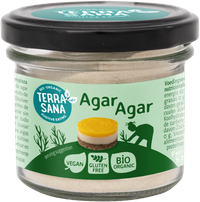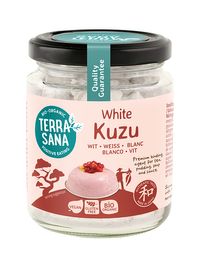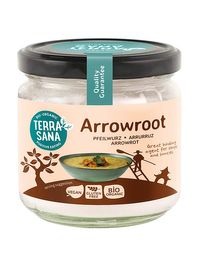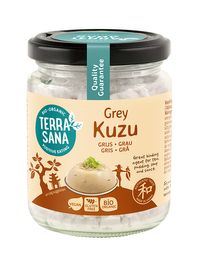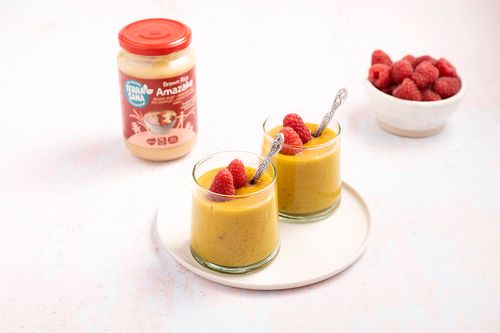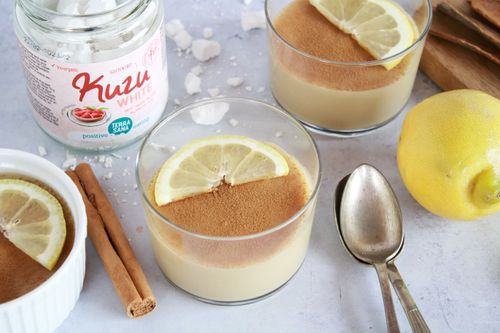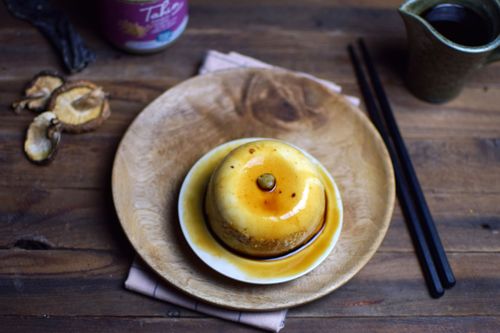Compare 3 binders yourself: kuzu, arrowroot and agar-agar

Comparison and use of binders
In particular, arrowroot and kuzu are very similar. They are sometimes even confused with each other. And although they are both made from a Japanese root, kuzu root does differ from arrowroot (arrowroot in Dutch). So the base material makes the difference! In addition, arrowroot comes in powder and kuzu in cubes. Both thickeners are good substitutes for cornstarch.
Agar-agar is also vegan, gluten-free and Japanese, but agar agar is more of a gelling agent. Its binding power is much stronger. Therefore, you can use it to stiffen cakes, make puddings and use it in terrine. Agar agar is a vegetable substitute for gelatine. In fact, it is about 3-5x as powerful!
How to use arrowroot, kuzu and agar agar? And how can you substitute kuzu or arrowroot? We walk you through everything.
What is kuzu?
Kuzu (kudzu) is a gluten-free Japanese binder. It is white cubes made from the starch of the root of the Japanese kuzu plant. This is the main difference from arrowroot: it comes from a different type of root. In Japan, they see kuzu as a medicinal plant.
What is the difference between white and grey kuzu?
You can buy white or grey kuzu, and they both look the same. They are white cubes in both cases. The difference is that grey kuzu is an unfiltered, unwashed version of white kuzu. Grey kuzu is cheaper than white kuzu. Note that you also need at least 20% more to bind the same amount of sauce or soup.
How to use kuzu?
Kuzu is best suited as a natural and gluten-free substitute for cornstarch. It binds soups and sauces without affecting the flavour. A great advantage over non-natural binders!
Dissolve kuzu in water to use it in sauce or soup:
First, dissolve kuzu in a few tablespoons of cold water and then add the porridge to your dish while stirring. Kuzu gives a bright sheen and a nice tight binding once your dish cooks. Use 10 grams of white kuzu and 12-15 grams of grey kuzu to thicken 500 ml of liquid.
Can I substitute kuzu for arrowroot?
You can definitely substitute kuzu for arrowroot, and vice versa. Both are gluten-free thickeners with similar binding power. Use the same amount of kuzu as arrworoot and dissolve the powder (arrowroot) or cubes (kuzu) in cold water before adding it to your soup or sauce. Both thickeners are bright in colour and neutral in flavour. Still: if you ask a Japanese person this question, they will probably say that kuzu gives better results, both in your soup or sauce and in your body. Especially in binding thin liquids, kuzu excels just a little more, and you also need less to make a nice, smooth whole of your dish. And then, of course, there are the medicinal properties of kuzu that arrowroot cannot match.
What can you make with kuzu? Japanese dishes with kuzu
Kuzu is a natural binding agent with a neutral flavour. As a result, you can use kuzu in many different types of dishes. In Japan, they mainly use kuzu for:
- Kuzu mochi: a traditional Japanese dessert made of kuzu, water and sugar.
- Hot drinks: soothing drinks with kuzu and something sweet.
- Soup and sauce: thickening your soups and sauces without affecting the flavour.
Some of our favourite dishes with kuzu are:
Kuzu is not suitable for stiffening or ‘gelling’ in most cases. You’d rather use agar-agar for that. But if you use a lot of kuzu, a pudding can become quite firm. Just look at goma dofu above!
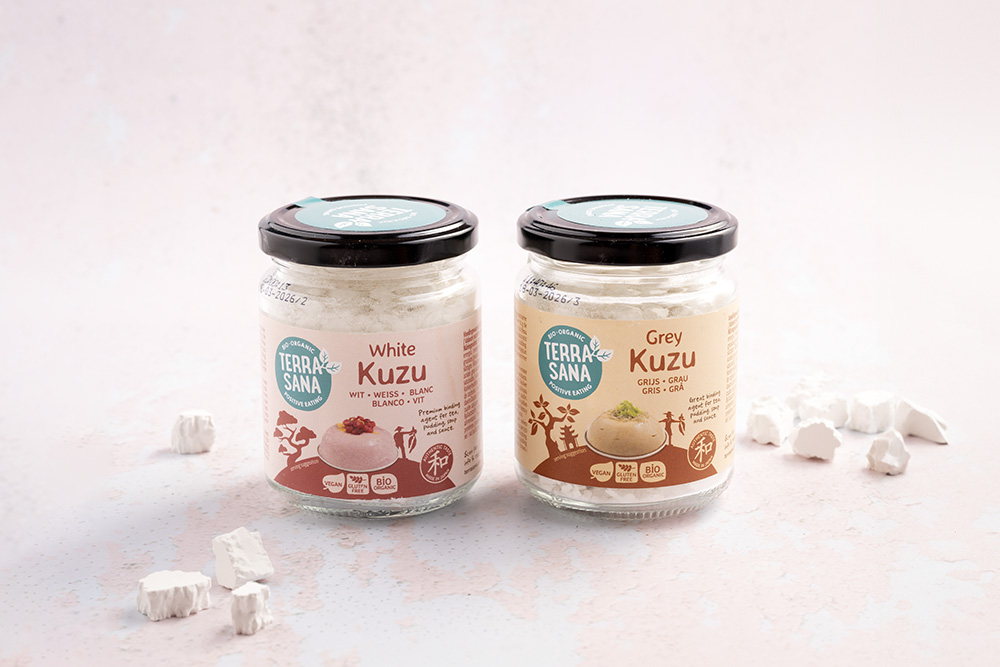
What are the benefits of kuzu for your health?
In Japan, they see kuzu as a medicinal ingredient. The fact that kuzu is a binding agent is an afterthought in Japan. Do you have stomach or intestinal problems, a cold or the flu? For many Japanese, that is the time to make kuzu tea. This is slightly thickened (green) tea, sometimes with a pinch of ume paste or a bit of umeboshi.
How do you make kuzu tea?
In Japan, you drink kuzu tea when you don’t feel so good, or if you just want to work on your gut health, feel inflammation in your body or want to balance your hormones. How do you make kuzu tea? Very simple:
- Heat water with (green) tea in a saucepan.
- Make a mash of a few cubes of kuzu and cold water.
- Add the kuzu porridge to the pan and mix until dissolved. Do not boil too hard or too long, or the tea will become too thick.
- If necessary, add a pinch of ume paste or a tiny bit of umeboshi. The Japanese say there are medicinal benefits to this too. A power combo!
Preferably drink kuzu tea on an empty stomach, then the kuzu does its job best.
What is arrowroot?
What is arrowroot? Arrowroot powder is a Japanese binder made from the arrowroot. This arrowroot powder gives a creamy effect to soups and sauces. Its binding power can be compared to regular cornstarch, but the main difference is that arrowroot binds clearly. In addition, arrowroot is more effective than cornstarch at a lower temperature. Arrowroot powder is neutral in flavour and, unlike cornstarch, takes nothing away from the natural flavours in your dish.
How to use arrowroot?
Apart from thickening soups and sauces, arrowroot is also great to use in vegan baked goods, for example as a substitute for egg. Arrowroot is not a gelling agent. It therefore does not stiffen.
Dissolve arrowroot in water and mix it into your soup or sauce:
First dissolve the arrowroot powder in a few tablespoons of cold water. Add the resulting paste to the hot liquid. Use about 25 grams of arrowroot to thicken 500 ml of thin liquid. Arrowroot will only bind properly when the dish cooks.
What can you make with arrowroot? Dishes with arrowroot
Arrowroot is very easy to use because of its fine powder. You can use it for the same things as kuzu, but arrowroot is also widely used for ‘coating’. Think tofu, tempeh or cauliflower, or other vegetables that need a crispy coating. Or meat, if that’s what you eat.
Some of our favourite recipes using arrowroot:
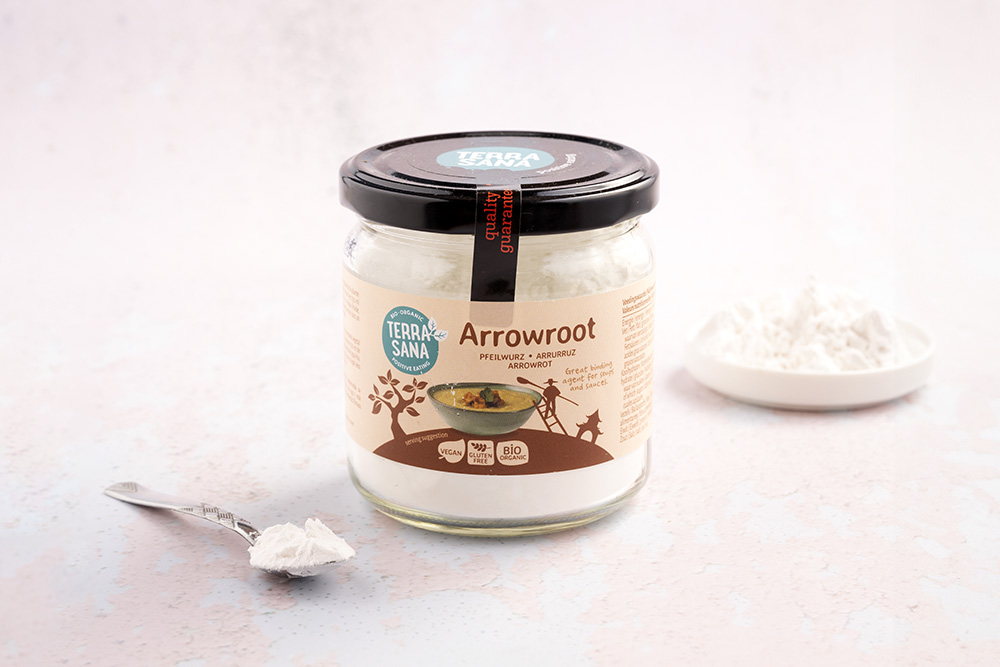
Can I replace arrowroot with cornstarch, tapioca or coconut flour?
Don’t have arrowroot powder at home? You can always substitute arrowroot for kuzu, as the action of arrowroot and kuzu is equally powerful. Kuzu is the best arrowroot alternative.
Replacing arrowroot with tapioca also works fine, but note that tapioca starch scores much higher on the glycaemic index. So the effect in your body is different.
Replacing arrowroot with cornstarch works slightly less well. Cornstarch often makes your soup or sauce grainy, milky and less neutral in flavour. If this makes no difference to your dish, you can use the same quantities as you would for arrowroot.
Replacing arrowroot with coconut flour is not a good idea. Coconut flour absorbs moisture but binds little or not at all.
Making your own deo with arrowroot
OK, this has nothing to do with food, but something else you use arrowroot for is homemade deodorant. This, of course, totally fits into a conscious living and/or zero-waste lifestyle. You make it together with coconut oil, baking soda and essential oil. We always use this recipe for homemade deo:
- 60 g good quality coconut oil (you can also replace some with shea butter)
- 15 g arrowroot powder
- 15 g baking soda
- 5 drops of essential oil to your taste
Put everything in a small blender and blend until super smooth. You can also melt the coconut oil and then blend everything, but you get by far the nicest (smooth) deodorant if you use a blender.
Agar agar is a vegetable substitute for gelatine
Agar agar is also known as lace in Japan. It is 100% powdered red seaweed. Agar agar consists of 77% fibre and is completely vegan, unlike its animal brother gelatine. You will use agar agar most often for stiffening desserts. Its binding power is enormous: even 2-3 times stronger than that of gelatine.
Agar agar has a neutral taste and can therefore be used in both cakes (sweet) and vegetable terrine (savoury).
How to use agar agar? Some tips
Always measure or weigh agar agar accurately, it comes out very precisely! Add it to hot liquid and simmer gently. Never add agar agar to cold liquids, because agar agar will solidify in no time and create lumps that you won’t be able to get out. A few hours after the dish has cooled down, the agar agar will give it a firm shape. Agar agar is also great for making jam, jelly or marmalade and can also be used as a natural preservative. Or make vegan cheesecakes with it!
To give an idea of binding power: for a medium consistency, use 3-4 g per 500 ml of thin liquid. For a hard consistency, use 5-8 g per 500 ml and for a soft one, use 1.5 g per 500 ml. Add to your bake while the liquid is already hot and stir quickly to avoid lumps. Simmer gently for about 2 minutes. Leave to set for 1-4 hours.
Agar agar already solidifies at room temperature, so make sure you work quickly when baking. Click here for a detailed explanation of how to use agar agar.
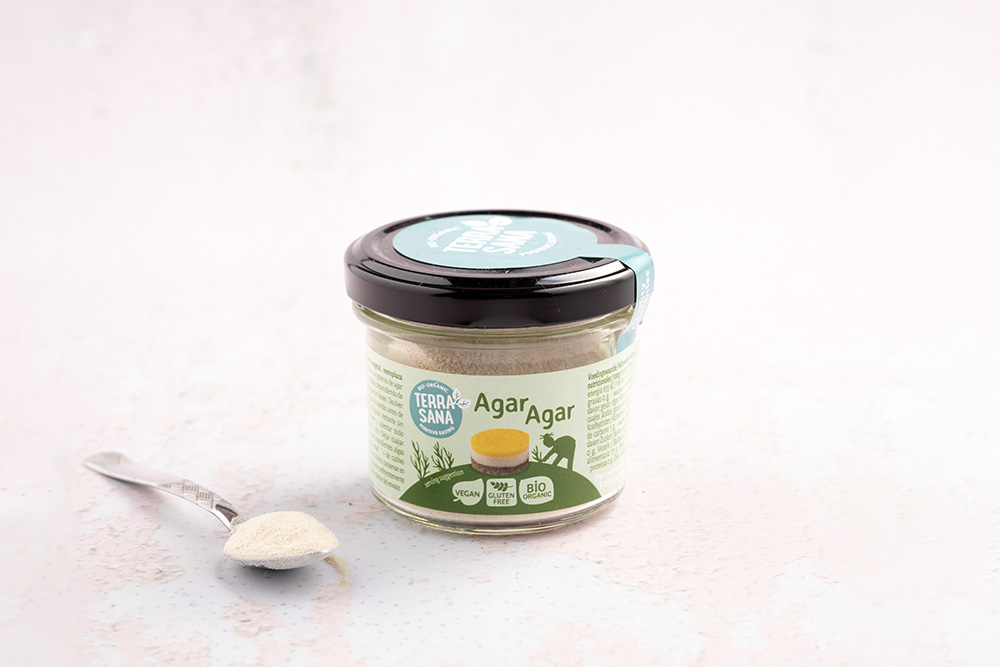
Agar agar vs arrowroot: can you substitute them?
Can you substitute agar agar for arrowroot? The answer is simple: no. The action of agar agar is really different from that of arrowroot powder. Agar agar gels and becomes stiff once the liquid cools. Arrowroot powder is not a gelling agent, but a binding agent. So you use this more in hot dishes, to thicken soup or sauce, for example.
